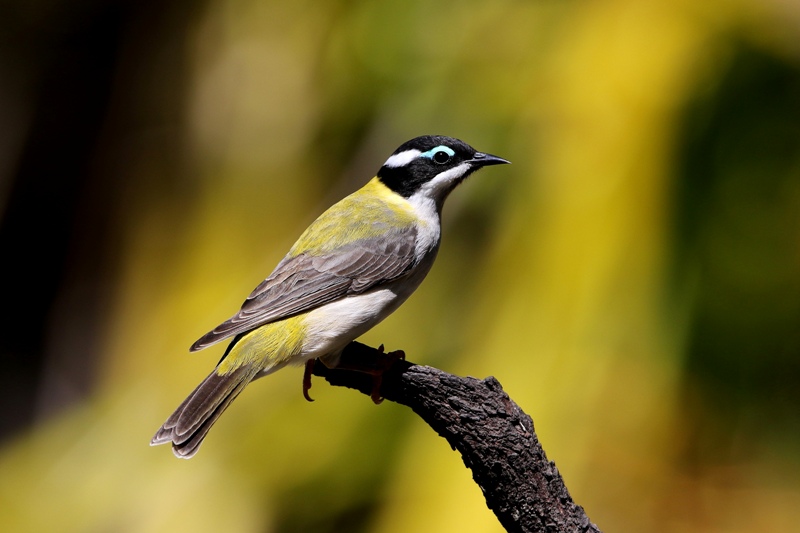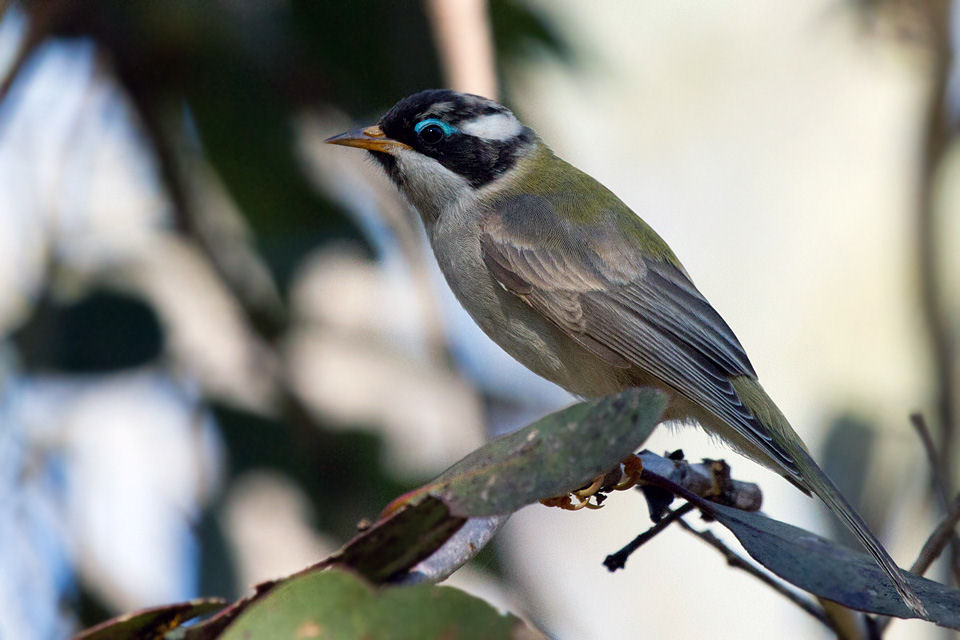
Richard Waring's Birds of Australia Blackchinned Honeyeater at Ellery Creek
Black-chinned Honeyeater Melithreptus gularis Scientific name definitions. Names (16) Subspecies (2) Peter J. Higgins, Josep del Hoyo, Nigel Collar, Les Christidis, Guy M. Kirwan, and Hugh Ford Version: 1.0 — Published March 4, 2020 Text last updated June 8, 2017. Sign in to.

Honeyeater, Blackchinned Central QLD Coast Landcare Network
The black-chinned honeyeater (Melithreptus gularis) is a species of passerine bird in the family Meliphagidae. It is endemic to Australia. Two subspecies are recognised. Its natural habitats are temperate forests and subtropical or tropical dry forests.

Blackchinned Honeyeater [Bushpea 9/14] Large
The black-chinned honeyeater ( Melithreptus gularis) is a species of passerine bird in the family Meliphagidae. It is endemic to Australia. Two subspecies are recognised. Its natural habitats are temperate forests and subtropical or tropical dry forests. Taxonomy

Blackchinned Honeyeater_C8A2169w Australian birds, Bird species, Bird feeders
Black-chinned Honeyeater Melithreptus gularis. Family: Honeyeaters. Status in the ACT: Non-breeding vagrant. Eastern sub-species declared Vulnerable in NSW. PDF Data Sheet [Show slideshow] Injured Native Birds Contact: ACT: ACT Wildlife 0432 300 033 NSW: Wildcare 6299 1966

Blackchinned Honeyeater in Victoria Australia Stock Photo Image of laetior, warren 268570084
Black-chinned Honeyeaters are small nectar-eating birds. Except for a light-blue skin patches above the eyes and a white band around the nape of the neck, their head is black. Down the centre of their throat they have an inconspicuous black vertical stripe, contrasting against the white sides of the throat.

Blackchinned Honeyeater (Melithreptus gularis) Pet birds, Nature birds, Most beautiful birds
The black-chinned honeyeater ( Melithreptus gularis ) is a species of passerine bird in the family Meliphagidae. It is endemic to Australia. Two subspecies are recognised. Its natural habitats are temperate forests and subtropical or tropical dry forests. Te Terrestrial No Nomadic B starts with Appearance

Blackchinned Honeyeater ZooChat
Escapee: Exotic species known or suspected to be escaped or released, including those that have bred but don't yet fulfill the criteria for Provisional. Escapee exotics do not count in official eBird totals. Learn about Black-chinned Honeyeater (Golden-backed): explore photos, sounds, and observations collected by birders around the world.

Blackchinned Honeyeater (Melithreptus gularis)
Black-chinned Honeyeater Did you know? When choosing hair or fur to make its nest the Black-chinned Honeyeater tends to choose pale colours, plucking the white or cream hairs from cattle and horses (and even from a cat), as well as wool from sheep. Calls Loud churring or scratchy 'creep-creep-creep'. Also gives beautiful, complex song. play stop

Blackchinned Honeyeater in Victoria Australia Stock Photo Image of exotic, fauna 268570086
The Black-chinned Honeyeater Melithreptus gularis gularis is one of three species of white-naped honeyeaters in the genus Melithreptus found in Victoria, others being the Brown-headed Honeyeater Melithreptus brevirostris and the White-napped Honeyeater Melithreptus lunatus. The Black-chined Honeyeater is also one of six species of honeyeater listed on the Victorian Threatened Fauna Advisory.

Blackchinned Honeyeater in Victoria Australia Stock Image Image of avian, warren 268570059
Black-chinned Honeyeater - The Australian Museum When choosing hair or fur to make its nest the Black-chinned Honeyeater tends to choose pale colours, plucking the white or cream hairs from cattle and horses (and even from a cat), as well as wool from sheep.

Blackchinned Honeyeater eBird
Black-chinned Honeyeater (eastern subspecies) ( Melithreptus gularis gularis ) Download strategy (PDF) Registered users New search Saving our Species strategy This species has been assigned to the Landscape species management stream under the Saving our Species (SoS) program. Justification for allocation to this management stream

Blackchinned Honeyeater in Victoria, Australia Stock Image Image of melithreptus, colorful
The Black-chinned Honeyeater is the largest of its genus, reaching 17 cm in length. The cap is black, with a white crescent around the nape, and there is a diagnostic black 'chin' beneath the bill and extending down the white throat (though this can be difficult to see in the field). There is a small crescent of blue skin above the eye.
.jpg)
BirdLife Melbourne New Holland Honeyeater
Black Honeyeaters, especially females, often eat charcoal and ash at old camp-fire remains.

Blackchinned Honeyeater (Melithreptus gularis) 1/2 Flickr
Meliphagidae (honeyeaters and chats) Scientific name Melithreptus gularis gularis Gould, 1837 Common name black-chinned honeyeater (eastern) WildNet taxon ID 22457 Alternate name(s) black-chinned honeyeater black-chinned honeyeater (black-chinned) Nature Conservation Act 1992 (NCA) status Least concern Conservation significant No Endemicity.

Blackchinned Honeyeater The Australian Museum
Black-chinned Honeyeaters are likely to experience high levels of competition from aggressive honeyeater species such as Noisy Miners or White-plumed Honeyeaters, both of which occur at high densities in small remnants of Red Gum and box-ironbark associations.

Blackchinned Honeyeater a photo on Flickriver
Medium-sized honeyeater with a black hood and tiny black mark on chin. There are two subspecies which have significant visual differences. The subspecies in southeastern Australia has an olive back and blue skin around the eye. The